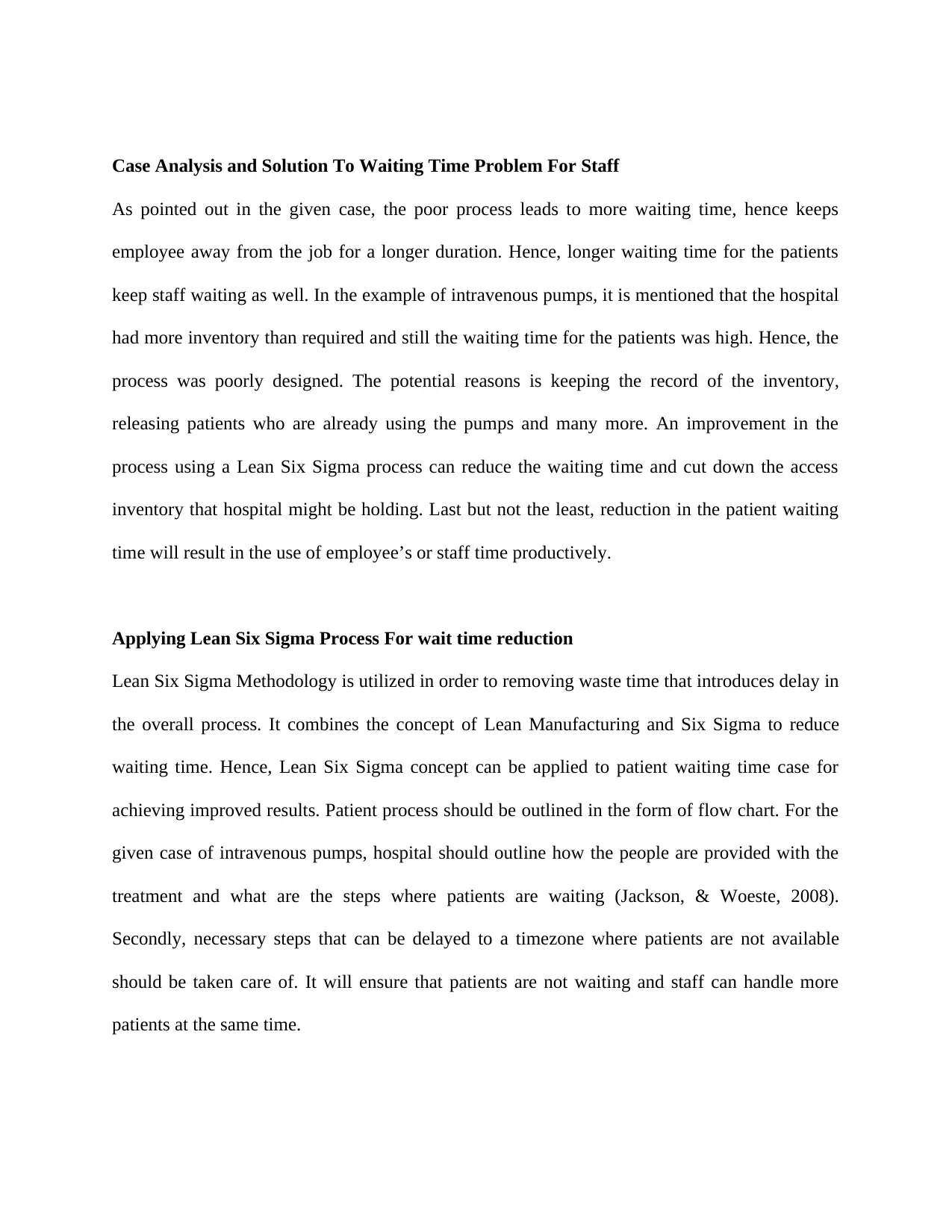Waiting Time Problem: Case Analysis & Solution
VerifiedAdded on 2019/09/18
|2
|355
|291
Case Study
AI Summary
This case study analyzes the problem of excessive patient waiting times in a hospital setting, specifically focusing on the use of intravenous pumps. The analysis identifies poor process design as a key contributor to the issue, leading to both patient and staff delays. The proposed solution involves applying the Lean Six Sigma methodology to streamline processes, reduce waste, and ultimately decrease waiting times. The study emphasizes the importance of mapping patient processes, identifying bottlenecks, and optimizing resource allocation to improve overall efficiency and productivity within the healthcare environment. The reference provided supports the application of Lean Six Sigma in healthcare settings.
1 out of 2







![[object Object]](/_next/static/media/star-bottom.7253800d.svg)